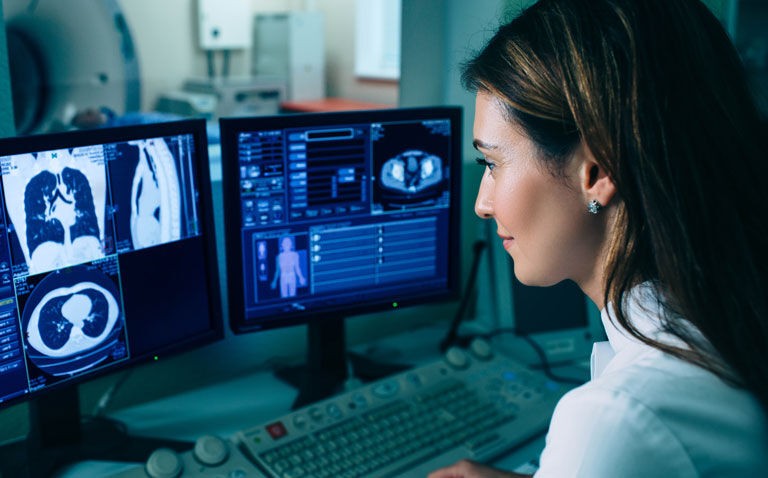Using a single low-dose computed tomography scan and a deep learning model enabled predictions of lung cancer risk over one to six years
US and Taiwanese researchers have shown that the use of a single low-dose computed tomography (CT) scan, together with a deep learning algorithm, allows for a prediction of an individual’s risk of lung cancer over the next six years.
The use of low-dose CT screening has been shown to reduce mortality from lung cancer. Such screening allows for the early detection of the disease and hence the potential for better patient outcomes, although it has been suggested that the current screening guidelines might overlook vulnerable populations with a disproportionate lung cancer burden. Nevertheless, the efficiency of lung cancer screening could be improved by individualising the assessment of future cancer risk. The problem is determining how this can achieved. To date, there are some data to support the use of clinical risk assessment models that incorporate various factors compared to simply using age and cumulative smoking exposure. However, there are enormous possibilities created by greater use of artificial intelligence and deep learning models. In fact, it has become possible to utilise low-dose CT scan results and the presence of pulmonary nodules, into a model and to therefore optimise the screening process. But how useful are other pieces of information gathered from a CT scan beyond the presence of nodules, and could this other information be used by a deep learning model to predict future cancer risk.
This was the aim of the current study in which researchers developed a model, which they termed ‘Sybil’ using the entire volumetric low-dose CT data, without clinical and demographic information, to predict an individual’s future cancer risk. Sybil was able to run in the background of a radiology reading station and did not require annotation by a radiologist. The model was validated using information from three independent screening datasets which included individuals who were non-smokers.
Low-dose CT screening and lung cancer risk prediction
In total, data were retrieved from over 27,000 patients held in three separate databases. Sybil achieved an area under the curve (AUC) of 0.92, 0.86 and 0.94, for the 1-year prediction of lung cancer for each of these datasets. In addition, the concordance indices over 6 years were 0.75, 0.81 and 0.80 for the same three data sets.
The authors concluded that Sybil was able to accurately predict individual’s future risk of lung cancer based on a single low-dose CT scan and called for further studies to better understand Sybil’s clinical application.
Citation
Mikheal PG et al. Sybil: a validated Deep learning model to predict future lung cancer risk from a single low-dose chest computed tomography. Clin Oncol 2023










